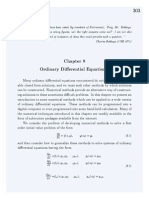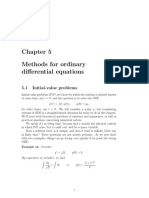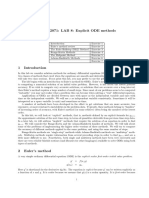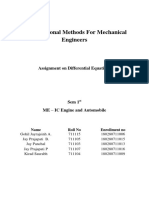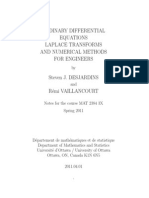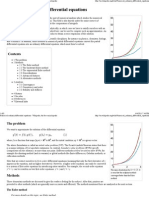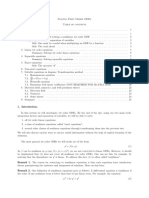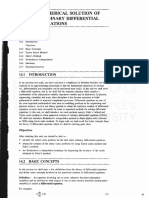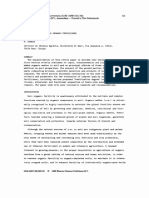0% found this document useful (0 votes)
34 views4 pagesODE NM Introduction
Chapter 8 discusses numerical methods for solving ordinary differential equations (ODEs), particularly focusing on initial value problems. It outlines the distinction between one-step and step-by-step methods, and introduces various techniques such as Euler's method and Runge-Kutta methods. The chapter emphasizes the importance of numerical solutions in engineering applications where analytical solutions are difficult to obtain.
Uploaded by
thuktendorji804Copyright
© © All Rights Reserved
We take content rights seriously. If you suspect this is your content, claim it here.
Available Formats
Download as PDF, TXT or read online on Scribd
0% found this document useful (0 votes)
34 views4 pagesODE NM Introduction
Chapter 8 discusses numerical methods for solving ordinary differential equations (ODEs), particularly focusing on initial value problems. It outlines the distinction between one-step and step-by-step methods, and introduces various techniques such as Euler's method and Runge-Kutta methods. The chapter emphasizes the importance of numerical solutions in engineering applications where analytical solutions are difficult to obtain.
Uploaded by
thuktendorji804Copyright
© © All Rights Reserved
We take content rights seriously. If you suspect this is your content, claim it here.
Available Formats
Download as PDF, TXT or read online on Scribd
/ 4


